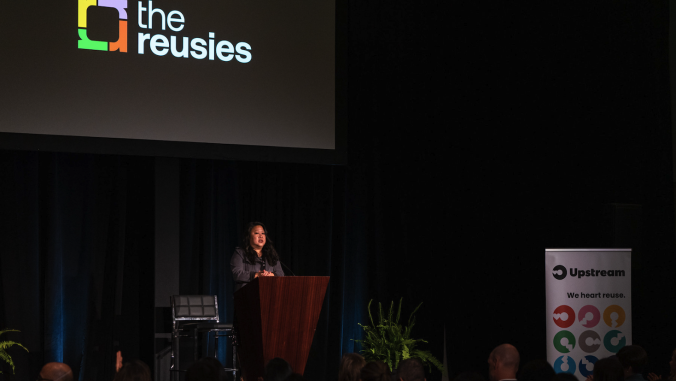A version of this article originally appeared in our Circularity Weekly newsletter. Subscribe to the newsletter here.
I was invited to read a new book and interview one of the authors. As someone who has long enjoyed reading books about sustainability, it was very flattering to be sent a copy of a new book, "The Sustainability Scorecard," by Paul Anastas and Urvashi Bhatnagar, and asked to provide my thoughts in a review.

Many of our Circularity Weekly readers are probably familiar with Paul Anastas. A hero of mine since graduate school, Anastas is a deep thinker, a brilliant chemist and an engaging speaker. I was far less familiar with Urvashi Bhatnagar. Fortunately for me, I had the opportunity to chat with Bhatnagar over the phone about her book and immediately became a fan. A healthcare executive and population health expert with a keen eye toward sustainability, Bhatnagar brings a different perspective to "The Sustainability Scorecard" that pairs quite well with Anastas.
"The Sustainability Scorecard" provides a simple and straightforward method for identifying where a company currently is on its sustainability journey and a method to track progress. The book proves that sustainability makes economic as well as ecological sense and guides leaders in creating and scaling their own green supply-chain initiative. I’ve read a lot of sustainability books, and this one provides the most practical steps for corporate improvement. According to Goodreads, "Through repeatable, reliable processes that address operating model design and new key performance indicators to scaling, this book is a practical guide that leaders can rely on to make their existing systems more sustainable and profitable."
What I learned No. 1: Entrenched systems are not so entrenched
To some degree, this takeaway from the book follows quite well on my piece from a couple Fridays ago. We often get the false sense that the status quo is the status quo is the status quo is the status quo (Wait, did I just type that a bunch of times? Whoops, leaving it in because it helps make the point). "Entrenched systems and globe-spanning companies may appear impossible to dislodge," Bhatnagar and Anastas write, "but consider that none of the top-10 most valuable companies today were on that list in 1990. Many didn’t even exist in 1990. Big changes can happen within only a few decades." Because of this, we need to overcome the learned behavior that we can’t make a difference because the behemoths in the economy will never change.
What I learned No. 2: The scorecard framework
Bhatnagar and Anastas have provided a straightforward and scalable model for firms to move directionally towards sustainability. The framework focuses on four areas:
- Waste prevention
- Maximizing efficiency and performance
- Renewable inputs
- Safe degradation of materials
While these endpoints are largely rooted in environmental sustainability, they also cross over into social wellbeing for workers, fence-line communities and product users — all very important considerations for any sustainability practice.
When I looked at the scorecard, I was struck by how it is simultaneously simple and in-depth. The four high-level goals manage to get to the heart of how to make more sustainable products and processes without overcomplicating things. The authors have developed a data-driven methodology that can be approached whether you are starting your sustainability work (Initiate phase), are down the path but still learning (Develop phase) or are an industry leader that’s been focused on sustainability for quite some time (Maturity phase). The key to this framework, and I think one of the key insights I pulled from the book, is that directionality is important. In other words, set a direction for your sustainability work that aligns with the best science available and start moving. Sure, the pace we are moving is important, but the direction is far more so.
What I learned No. 3: Perfection is unattainable
When I spoke with Bhatnagar about the book, she mentioned this was one of the sticking points in writing and publishing it. There is always a desire within any framework to define the perfect state, to show users how to grab the brass ring. Bhatnager and Anastas argue that sustainability doesn’t have a perfect state. Even if firms can achieve the best score in all areas of the sustainability scorecard (zeros for all categories in this case), there will always be work to do. The work could be remediating the issues the firm has created in the past or pushing upstream and downstream partners to improve their sustainability. In other words, firms should be reaching for perfection, but it should always be getting farther away as the science evolves and shows us what it means to be sustainable as an individual, a company, a nation and a global community.
Overall
When I look at this book and the Sustainability Scorecard as a whole, I am excited for the structure it can bring to corporate sustainability in all sectors of the economy. Having spent a considerable amount of time in the private sector trying to build sustainability programs, I can confidently say that these broadly applicable frameworks are always welcome as inputs to a sustainability strategy.
I’d encourage folks to pick up this book, give it a read and think about how you can apply the Sustainability Scorecard to your own work. If you set directional goals, track data and measure progress, you can ensure you are moving in the right direction. And remember, if you reach for the brass ring and fall, at least you tried.






